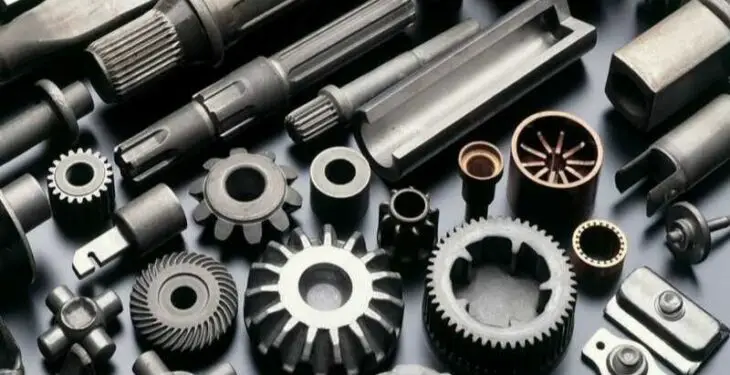In today’s fast-paced world, technology is constantly evolving, pushing boundaries and revolutionizing the way we live and work. Behind every sleek and powerful tech gadget lies an unexpected element that enables its functionality – cold-forged metal. While often overlooked, cold forging quietly became the integral part of the tech industry, shaping the quality and performance of our favorite devices. Let’s explore the impact of cold forging metal in technology, uncovering its benefits, applications and future trends.
Introduction
Cold forging metal refers to the process of shaping and reshaping metal at room temperature, utilizing specialized dies and tools to achieve precise geometries and unparalleled strength. This technique offers a cost-effective and efficient method for manufacturing high-precision components while minimizing waste and environmental impact. By exerting pressure on the metal without excessive heat, cold forging enhances its properties, resulting in increased strength, durability and resistance to wear and tear.
What sets cold forging apart from other metalworking methods is its versatility and ability to create intricate designs and tight tolerances that are unattainable through traditional casting or machining techniques. This adaptability has made it a vital component in the manufacturing of computer hardware, accessories, and other tech devices. Renowned tech companies have embraced cold forging to elevate the quality of their products, producing cutting-edge gadgets that stand the test of time and deliver unparalleled user experiences.
In the following sections, we will delve deep into the world of cold forging, exploring its role in technological advancements, how it enhances tech devices, and the future trends in this ever-evolving field.
What is Cold Forging Metal?
At its core, cold forging involves the shaping and reshaping of metal at room temperature, offering a cost-effective and efficient method for manufacturing high-precision components. By exerting pressure on the metal through specialized dies and tools, manufacturers can achieve complex geometries and unparalleled strength without the need for excessive heat. This process not only enhances the material properties of the metal but also minimizes waste, making it an environmentally friendly choice for sustainable production practices.
Advantages of cold forging over traditional methods are manifold. The process imparts superior mechanical properties to the metal, including increased strength, hardness, and overall durability. Cold forging also enables intricate designs and tight tolerances that are unattainable through casting or machining techniques. Common metals used in cold forging include aluminum, steel and copper, each offering unique benefits that cater to a wide range of technological applications.
The Role of Cold Forging in Technological Advancements
In an era driven by digital innovation, the marriage of cold forging and technology has paved the way for revolutionary advancements in various sectors. From the manufacturing of computer hardware to the production of cutting-edge accessories, cold-forged components play a pivotal role in shaping the devices we rely on daily. Renowned tech companies have embraced cold forging as a means to elevate the quality and performance of their products, setting new standards for excellence in the industry.
A prime example of the synergy between cold forging and technology can be seen in the production of laptops and smartphones. By incorporating cold-forged metal parts into these devices, manufacturers can enhance their structural integrity and minimize the risk of damage from everyday wear and tear. Furthermore, the thermal conductivity of cold-forged components facilitates improved heat dissipation, ensuring optimal performance even under demanding conditions.
How Cold Forging Enhances Tech Devices
The integration of cold-forged metal parts into tech devices goes beyond mere aesthetics, offering tangible benefits that elevate the user experience. Enhanced durability is a key advantage, as cold-forged components are inherently resilient to impact and torsion, resulting in devices that withstand the test of time. This increased robustness translates to greater reliability and longevity, ensuring that users can depend on their gadgets for years to come.
The thermal properties of cold-forged metal also contribute to efficient heat dissipation in electronic devices. By dispersing heat more effectively, laptops and smartphones can maintain optimal operating temperatures, preventing overheating issues that might compromise performance. This feature not only enhances the user experience, but also prolongs the lifespan of the device, making it a valuable asset for tech enthusiasts and professionals alike.
Cold Forging in Tech Products
Several tech products stand out as prime examples of the impact of cold forging on performance and user satisfaction. Take, for instance, a smartphone model that incorporates cold-forged aluminum components in its sleek design. Users rave about the device’s durability and premium feel, citing the robust construction and elegant finish as key selling points that set it apart from competitors.
In the realm of laptops, some manufacturers have adopted cold-forged copper heatsinks to optimize thermal management and improve overall performance. Customers praise the device’s ability to handle demanding tasks without compromising speed or efficiency, highlighting the importance of quality components in shaping their computing experience. These testimonials underscore the significance of cold forging in enhancing tech products and meeting consumer demands for reliability and sophistication.
Future Trends and Applications
As technology continues to advance at a rapid pace, the future of cold forging in the tech industry holds boundless possibilities. Emerging trends indicate a growing emphasis on sustainability and efficiency, driving manufacturers to explore novel applications for cold-forged components in upcoming tech products. Ongoing research and development efforts aim to unlock the full potential of cold forging, pushing the boundaries of material science and engineering to create cutting-edge solutions for tomorrow’s technology landscape.
Conclusion
The impact of cold forging metal in the tech industry cannot be understated. From optimizing performance and durability to enabling intricate designs and sustainable production practices, cold forging plays an important role in shaping the devices that have become indispensable in our daily lives. As we look to the future, it is essential to recognize and appreciate the significance of these metalworking techniques in driving innovation and setting new standards for excellence in technology. By understanding the transformative power of cold forging, we can gain a deeper appreciation for the craftsmanship and dedication that goes into creating the devices that inspire and empower us every day.






